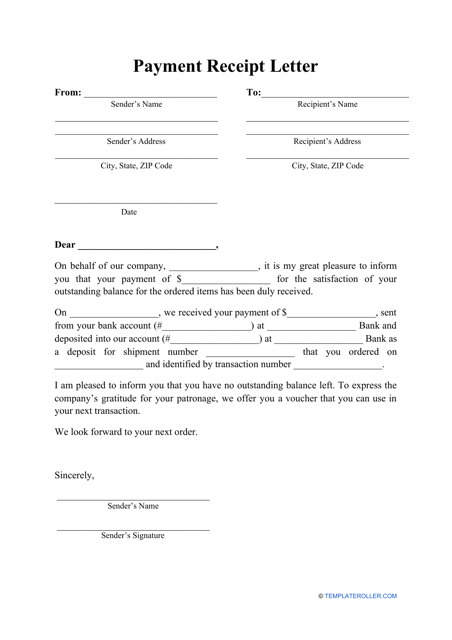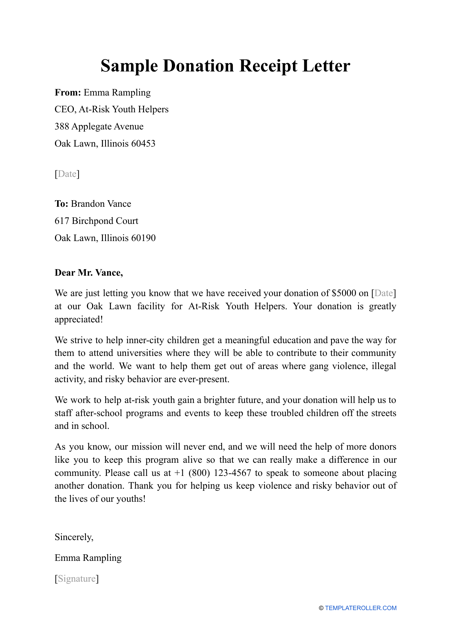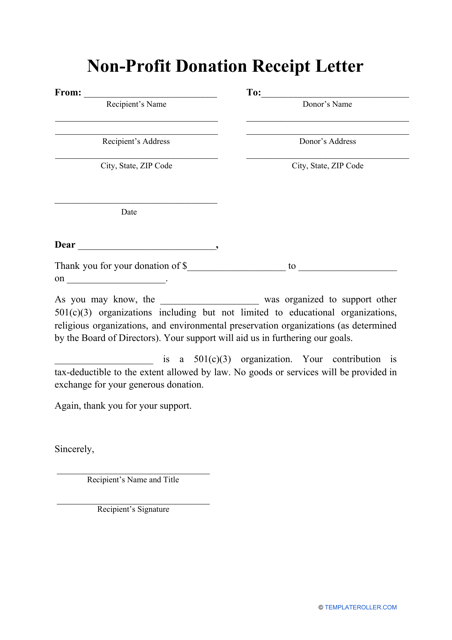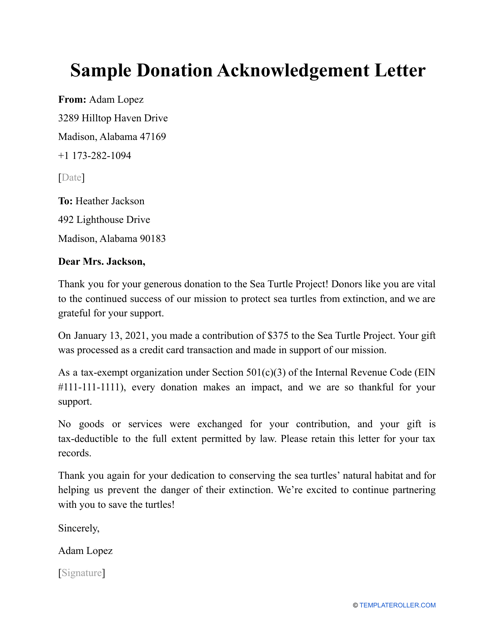Receipt Letter Templates and Samples
What Is a Receipt Letter?
A Receipt Letter is a document that is supposed to be used when an individual or an entity wants to confirm the fact that they have received payment, a donation, or certain documents from another party. The purpose of the document is to validate that a certain transaction has occurred, as well as describe its main terms.
A Letter of Receipt is a convenient tool that is generally used in business communication. It helps keep the other participant of the transaction updated about the status and details of the transfer. Check out the links below to download printable Receipt Letter templates and samples.
Receipt Letter Types
- Payment Receipt Letter. This type of letter can be used to confirm that an individual or an entity has received the payment that has been transferred to them. The document is supposed to verify the fact that the transaction has taken place and state its details.
- Donation Receipt Letter. This letter can validate that an individual or an entity has made a donation to a charitable organization. It is completed by the charitable organization that gives it to the donor as a verification of their donation.
How to Write a Receipt Letter?
Any Receipt Letter should contain the following information:
- Addressee. In the first part of the letter, the sender should identify the person they are addressing. They should state the full name and the postal address of the addressee, including their building number, street name, city, state, and ZIP code.
- Date. The sender should indicate the date when the letter was written. It can play an important role in formal documents since the terms stated in the letter can depend on its date.
- Sender. Here, senders can designate their full name and postal address. If the sender is authorized to represent a company and is writing on its behalf, then they should state the name and the location of the company.
- Introduction. The sender can start the letter with greetings and an opening that will describe the nature of their relationship with the addressee. For example, they can include a reference to the contract that both parties are involved with, or describe the agreement between them.
- Confirmation. Senders can use this part of the document to verify that they have received the payment, donation, documents, or another specific item that the addressee has transferred them.
- Transaction. This part of the document can provide the addressee with the description of the transaction that has taken place. For example, if it is a Donation Receipt Letter, the sender can depict the donation by stating whether it is a cash or non-cash donation, what exactly has been donated and how many items were there if it is a noncash donation, were any services provided in return for a donation, etc.
- Conclusion. Here, senders can offer the addressee help in case they have any questions concerning the matter. In action to this, they can provide their contact details for the convenience of the addressee. The details can include their telephone number and email.
- Signature. At the end of the letter, the sender should sign the document. It will state that everything written in the letter is true and correct.
Check out these related letter templates:
Related Articles
Documents:
5
A Payment Receipt Letter is a typed or handwritten document that confirms the acceptance of payment for monetary transactions of any size.
Send this letter to an individual or entity that has sponsored you with their money or valuable items.
A non-profit organization may prepare and send this letter to a donor to confirm that a donation or a gift was received and to thank the donor or sponsor for their financial support or tangible property they have donated.
This letter notifies an individual that their donation was received and thanks them for their support of the charity in question.
Individuals may use this type of letter as a reference when a charitable organization has received a contribution from a donor and they would like to acknowledge the donation.





